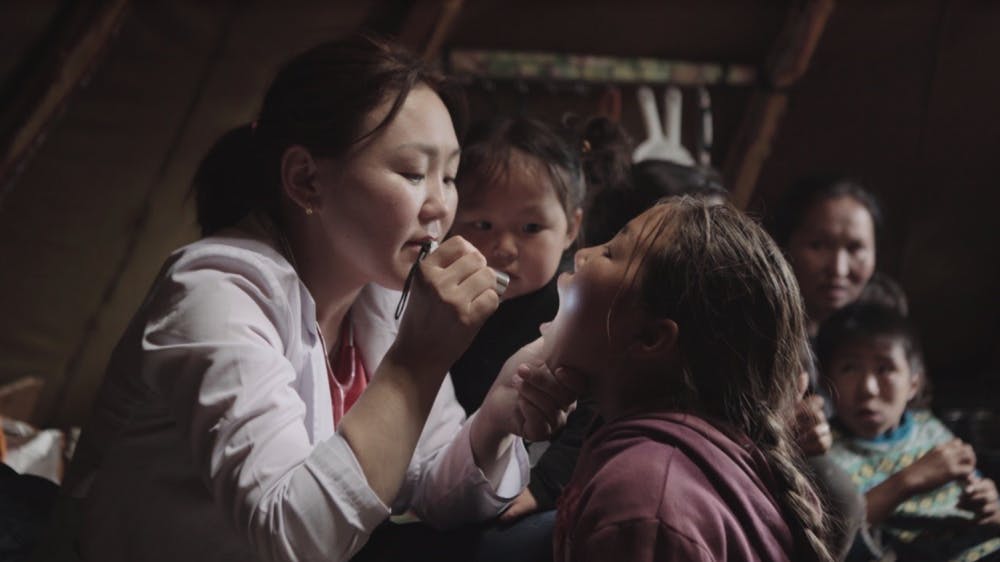 Sas Carey’s “Transition,” the latest showing in Middlebury’s Hirschfield International Film Series, is a documentary that details the intense urbanization that Mongolia has experienced through the story of a mother and daughter and their journey from the countryside of Mongolia to its capital city Ulaanbaatar.
Sas Carey’s “Transition,” the latest showing in Middlebury’s Hirschfield International Film Series, is a documentary that details the intense urbanization that Mongolia has experienced through the story of a mother and daughter and their journey from the countryside of Mongolia to its capital city Ulaanbaatar.
Carey has been traveling to Mongolia for about 20 years, and because of her relationship with the place and culture, she has dedicated herself to telling the story of Mongolia through four films (“Transition” being the fourth). This installment paints a detailed picture of the state of urbanization in Mongolia right now.
“Transition” documents the journey of Khongoroo, a doctor working in Ulaanbaatar who returns to the countryside to be with her daughter and family. In the country, people live a vastly different lifestyle than in the capital. They tend livestock, work in the fields and live in yurts. The film captures the beautiful landscape of the farmland, full of greenery, with a close community of families living, laughing and working together. It is in this remote land of East Taiga where these relationships, specifically between Khongoroo and her daughter, develop, painting a beautiful portrait of motherhood and family. There is a love between them and the rest of the group that cannot be easily expressed through words, but Carey is able to capture it instead through film. In one such moment, as Khongoroo picks her daughter up and wraps her in a big hug, the audience can feel the pure joy of their reunion. It is a heartwarming moment that Carey caught artfully, and it speaks volumes about the close relationship she holds with the East Taigans that she was able to access such an emotional and personal moment.
However, the core of this film is to show the titular transition that Mongolia is going through. We see the modernization of Mongolia through city life. With loud noises in the streets and masses of people flowing through the twists and turns of the metropolis, our first impression of Mongolia is one of activity and momentum. Then, as Khongoroo travels to the countryside, we see a completely different way of life.
However, this contrast was not always so dramatic. A hundred years ago, more Mongolians were nomads living in remote areas, doing the type of work that we see the nomads doing in the film, and building the relationships that are so heartwarming to watch on screen. Now, though, the majority of Mongolians live in cities, and that is eventually where Khongoroo returns, with her daughter by her side, as they reunite with the daughter’s father. However, even as the cultures change from vibrant and fast-moving to serene and uncomplicated, the tone of the movie doesn't change. It remains personal, perhaps because the subject of the movie is Khongoroo, someone with a calm and caring temperament, and we see the world through her eyes.
“Transition” conveys lots about Mongolia and its ongoing cultural shift over the past century by diving deep into the lifestyles that were once the norm but are now often obsolete, and the effects of such a drastic transformation, through the eyes of people who are closely affected by it. By seeing Khongoroo and her family’s journey up close, we gain a greater perspective on the gravity of the change Mongolia is undergoing. Carey has effectively documented the transition from a nomadic lifestyle to modern city living in a personal, emotional and beautifully shot form.
Reel Critic: “Transition”

Comments



